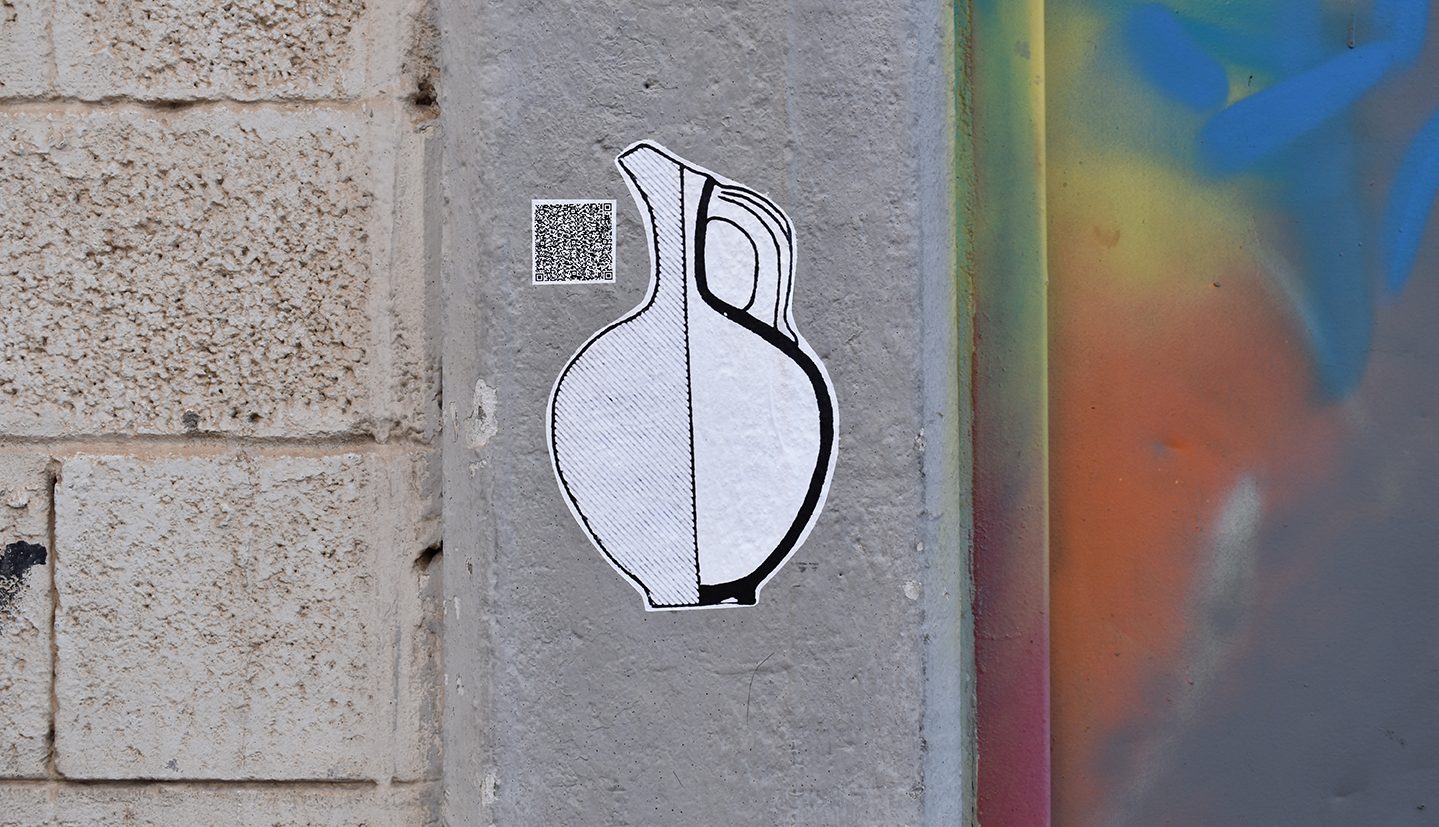Friday 16.10.2020 from 10:00–13:00
* The symposium will be broadcast on ZOOM – free, Prior registration required – press the link to sign up.
The Benyamini Center in conjunction with the Laboratory of Computational Archaeology, The Hebrew University, Jerusalem
New technologies allow us to reread historical artifacts, material cultural remains of the past, and opening a small window to understand the people who made the object and their culture. These modern technologies are used to create new objects that raise even more questions about contemporary material culture and their take on reality. In this symposium archaeologists and designers/artists will meet to observe the past and the present through objects and discuss questions that arise from the meeting of the two disciplines. What are the influences of changing technologies on material language? How can a “cloud of data” create a new object and what is the effect of “open source” on human knowledge and culture? What lies between individual style and cultural representation? How can we create new identities with digital means and change our conception of material reality? About archaeologists that think like artists and artists that think like archaeologists and the possibilities that exist in their meeting.
Agenda
10:00 Opening remarks- Marcelle Klein, Director of the Benyamini Center
10:05 Thoughts about art and contemporary archaeology- Prof. Leore Grosman, Head of the Computational Archaeological Laboratory, Archaeology Department, The Hebrew University of Jerusalem
10:15 Introduction to the exhibition XYZT: Material Investigations- Keren Nebenhaus, Curator of the exhibition, The Computational Archaeological Laboratory, Archaeology Department, The Hebrew University of Jerusalem
10:25 Technological findings in ceramic language- Shlomit Bauman, Head curator of the Benyamini center gallery, senior lecturer at the Industrial design Dep., at HIT-Holon Institute of Technology. The lecture will discuss the relationship between technological changes and the development of different trends in the ceramic language of the past and present.
10:45 Between forensics and archeology: Identification of personal and cultural signatures- Ortal Harush, The Computational Archaeological Laboratory, Archaeology Department, The Hebrew University of Jerusalem. The search for a personal and cultural style in recording archaeology is complex especially since archaeological artifacts do not represent a specific moment in time. The lecture will evaluate how slight changes that are invisible to the eye can illustrate a personal style and culture.
11:00 The future is the past: archeology and the posthuman- Dr. Carmel Vaisman, Digital Culture Researcher in the Humanities, Tel Aviv University. The lecture will present the posthuman perspective as a dialog for future technologies and the relevance of the distant past on the relationship between material culture and digital culture.
11:30 Break
11:40 The fifth matter condition- Maya Ben David, Product designer and lecturer at Bezalel Academy of Art and Design, Jerusalem. As apposed to physical material that is limited to the laws of physics and to a great extent to the “true material”, digital material allows us to blur the original, to redesign identity, to invent the laws and behaviors, to create new worlds without noticing, to change our conception regarding material reality. The lecture will observe and present the possible connections between chemistry, botany, technology, physics, and digital media.
12:00 Reading and Writing Our Surroundings- Dov Ganchrow, Product designer, senior lecturer in the Industrial Design Department at the Bezalel Academy of Art and Design, Jerusalem. The reflection of culture through material is the common ground for archaeology and design. The scientific analysis of materials is the “reading” of the physical and its comprehension. To “read” it is necessary for someone to “write” in the same material. Creating objects and environments understanding that they should be clearly read is a skill for designers.
12:10 Black hole – how a 3D analysis shed light on perforated stones from 12 thousand years ago- Talia Yashuv, The Computational Archaeology Laboratory, Archaeology Department, The Hebrew University of Jerusalem. This research focuses on the rare phenomenon of creating perforated stones in a village of hunters and gatherers next to the Ein Gev River at the Sea of Gallilee. The multi-dimensional analysis enables us to characterize this unique collection and to extract from the empty hole information to recreate the technology of making these tools, to assume how they were used and for what purpose.
12:20 Surfaces- The 4th Dimension of Digital Sculpture- Sharan Elran, Designer/Artist/Digital Potter/ Computer Scientist. Sharan is a lecturer at the Bezalel School of Art and Design and a PhD student at the Hebrew University of Jerusalem. In the history of ceramics, the surface is an endless area for diverse and complex artistic expression, however, in digital manufacture the surface is usually the by-product of the manufacturing process and a “wasted” area. In the work, “Goblet” Sharan examines the design of the surface of the vessel and transforms the digital process to an expressive one with a personal signature.
12:30 Atlas of Lost Finds- Claire Warnier, Designer, Unfold Design Studio. In September 2018, a devastating fire swept through the National Museum of Rio de Janeiro, Brazil and destroyed most of the artefacts, historical and art objects from a collection of about 20 million exhibits of great historical importance. A few years prior, many items of the museum collection were digitally scanned, or CT imaged for research purposes. Studio UNFOLD is presently using these scans as a basis to find ways of physically reproducing some of the items from the collection in collaboration with designers, artists, makers, and researchers from different places. The lecture will lay out the projects as well as the approach and rationale to reproduce the historical artifacts through new technologies.
12:45 Pottery and Computing – An Unlikely Partnership?- Prof. Uzy Smilansky, Emeritus Professor of Theoretical Physics, The Weizmann Institute of Science. “I will ponder aloud about what I learned in two decades of collaborative work with archaeologists: successes and difficulties, expectations and disappointments, chances and dangers.”
For more information about the Exhibition XYZT: Material investigations

